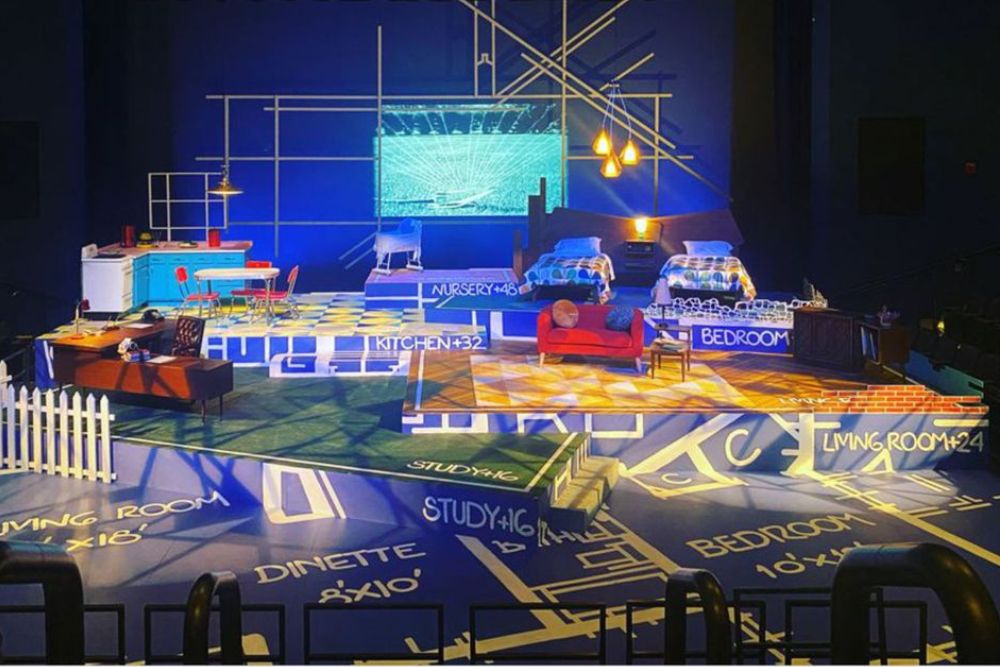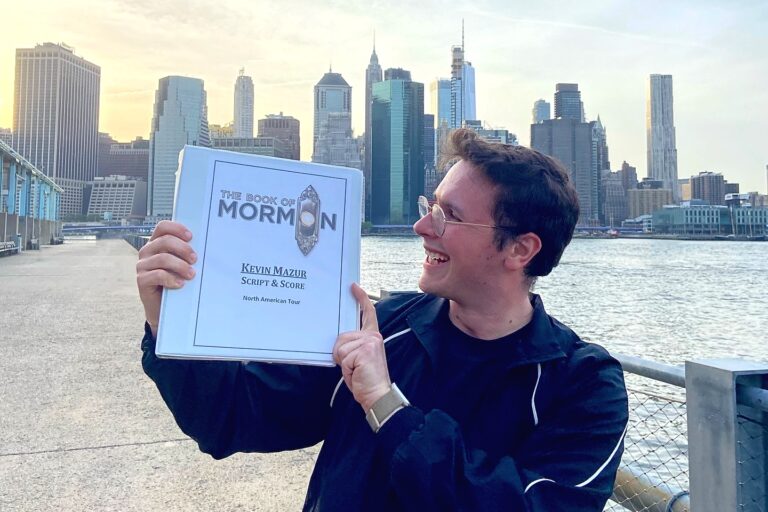After winning first place in Scenic Theatrical Design in the Kennedy Center American College Theater Festival (KCACTF) Region III Competition, Kasee Arnett, an MFA Design Candidate from Michigan State University, earned a spot to compete in the national competition in which she received the Distinguished Achievement Award along with a $500 cash prize.
Arnett attended the KCACTF virtual ceremony on May 21 and was recognized for her set design for the MSU Department of Theatre’s production of A Contemporary American’s Guide to a Successful Marriage © 1959. The KCACTF ceremony was initially scheduled to take place in person at the John F. Kennedy Center for the Performing Arts in Washington, D.C., and later transitioned to an online format due to COVID-19 protocols.

“Being online takes the pressure off of in-person presentations, so for that reason I was relieved, but it’s not as fun and educational as an in-person experience would’ve been in terms of the workshops and networking,” Arnett said. “I’m just tickled to death that I even placed.”
Written by Robert Bastron, MSU’s Department of Theatre premiered A Contemporary American’s Guide to a Successful Marriage © 1959 at the Wharton Center for Performing Arts last October. Set in the 1950s, Bastron’s satirical comedy follows the turbulent relationships of two young couples before and after their decision to get married.
“I started out too realistic and had to pull myself towards more stationary minimalism. I became influenced by 1950s modular home blueprints, which gave us the inspiration for the final design.”
With the assistance of the MSU Scene Shop, a resource facility on campus that supplies students with the equipment and technology for set construction, Arnett worked alongside a technical team of two faculty members and five students to produce the set over the course of two and a half months.
“The director, Rob Roznowski, and I went through trial and error; there was a lot of changes made and phases the set evolved through,” Arnett said. “I started out too realistic and had to pull myself towards more stationary minimalism. I became influenced by 1950s modular home blueprints, which gave us the inspiration for the final design.”

Described as “abstract realism” by Arnett, the set was designed to resemble a blueprint with the different room levels tiered in a staggered arrangement. Arnett’s design created for the audience a visual representation of the transition from dating to marriage through the allegory of blueprints being constructed into rooms of a home.
“I was taking a class on scenic design and enjoyed the process, so I vocalized interest in it to my professors and they had me on the list to design two performances during my undergraduate years.”
Arnett started her college education as an Art major at Morehead State University and transferred to their Theatre program before her second year when she soon discovered her passion for set design.
“I was taking a class on scenic design and enjoyed the process, so I vocalized interest in it to my professors and they had me on the list to design two performances during my undergraduate years,” said Arnett, who designed her first set in Fall 2015 for Clybourne Park by Bruce Norris, an ode to Lorraine Hansberry’s A Raisin in the Sun. Two years later, she completed the set for See How They Run by Philip King, a British comedy in which she experimented with 1950s Tudor architecture and design.

With a significant award now under her belt, Arnett is well on her way to a successful theatrical design career.
“Currently, I’m working for MSU’s Summer Circle Theatre and costume designing for the play Distracted by Lisa Loomer,” Arnett said. “I’ll be studying abroad in London, United Kingdom, for the month of July, and when I return to the United States, I’ll be designing scenery for the MSU Department of Theatre’s upcoming fall production of Corktown, or Through the Valley of Dry Bones by Jeff Augustin.”
Written by Kseniya Lukiy


